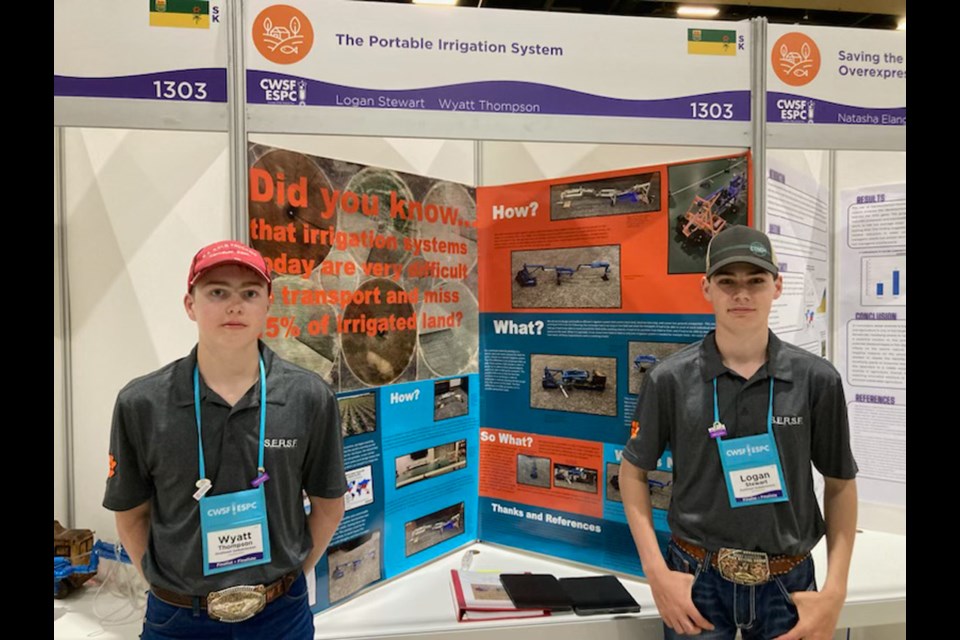CARNDUFF - At the Carnduff Education Complex, there is an exciting Grade 11 duo that has a lot of people talking.
Wyatt Thompson and Logan Stewart had an idea of a new and portable irrigation system that started as a school project but might turn into a college scholarship and opportunities to get their prototype made into a working model.
They won the regional science fair in Lampman with their idea and went on to nationals in Edmonton.
“Only .1 per cent of people make it to nationals,” said Stewart.
Traditional wheel line irrigation is what you may have seen out in the field. It is a long, odd-looking line of metal pipe suspended by big spoked wheels. The main problems with traditional wheel-line irrigation is that it is not easy to move from field to field, people often opt to have multiple systems and they miss the corners of the field because they rotate in a circle.
This creates a problem because fields are sectioned off into rectangles and squares, creating the classic issue of the round peg in a square hole. This subpar method of watering crops was one that needed a solution.
Stewart and Thompson set out to solve both these problems, growing up as farmers and being taught to not be afraid of hard work. It made them understand the situation and gave them the drive, and some of the experience, to know where to start.
“We started looking into irrigation and how to fix it,” Stewart said.
The answer was using GPS mapping and a hydraulic telescope, which extends out from the main body and then retracts as it follows the boundaries of each corner, as well as a compact scissor folding method, which made the unit portable.
The portability of the system makes multiple units of the wheel-line irrigation redundant. Using hydraulics, it is designed to fold in on itself with the field wheels safety tucked up while the second set of wheels come down for transport. After that it is just a matter of hitching it up to a semi to be moved to the next field.
The next steps are building a working model, and coming up with a business plan and a technology scope.
“Estevan Techhub is helping us with the grant process,” said Thompson.


